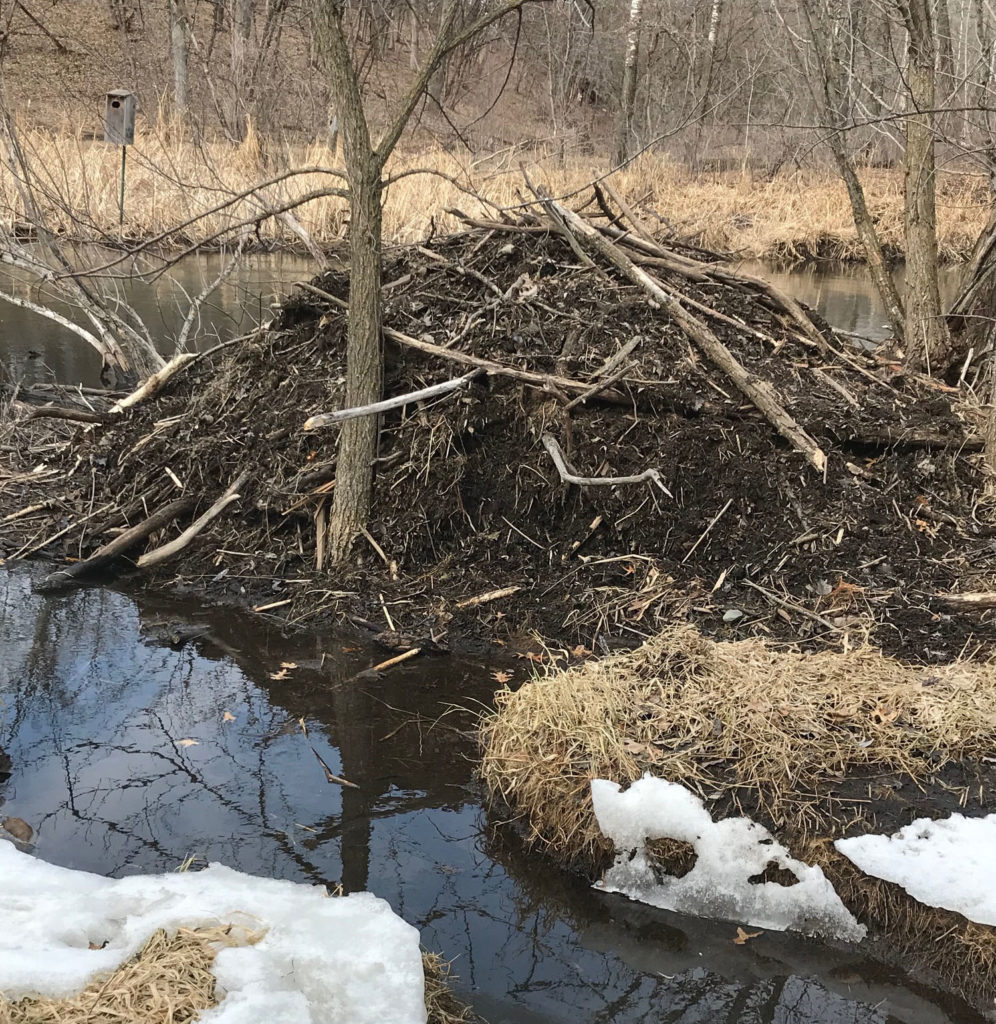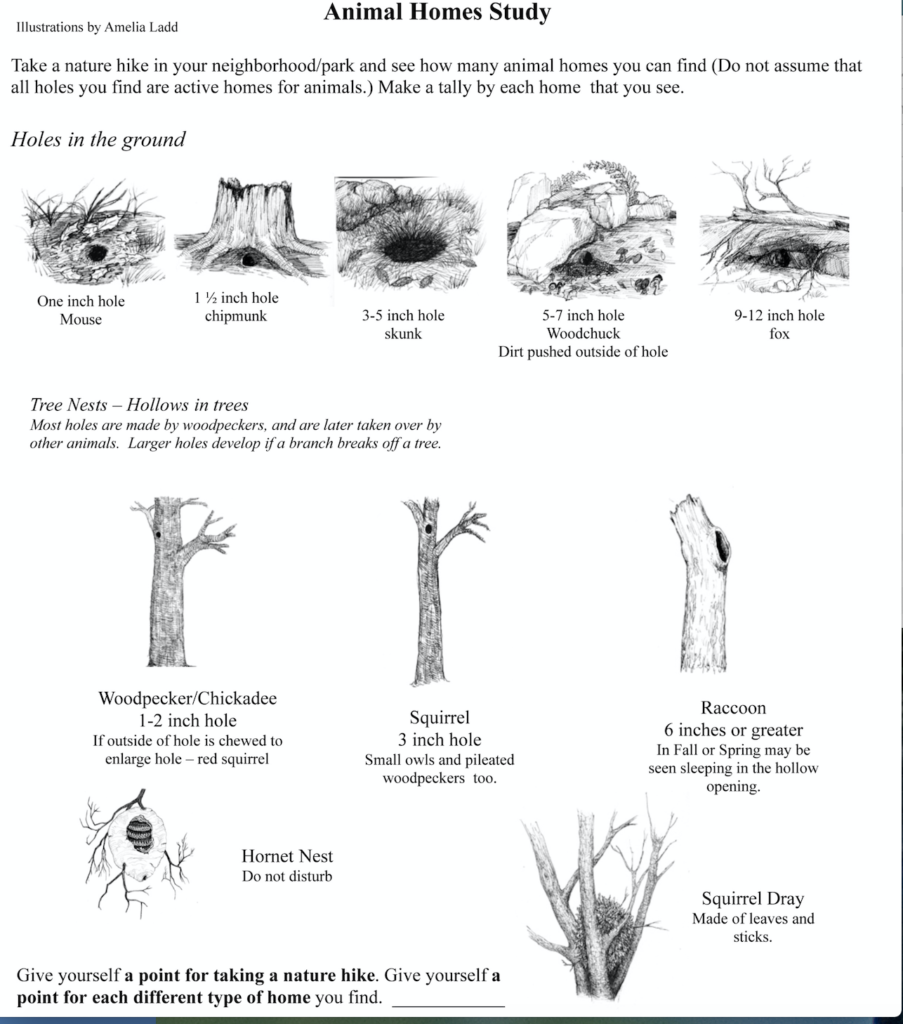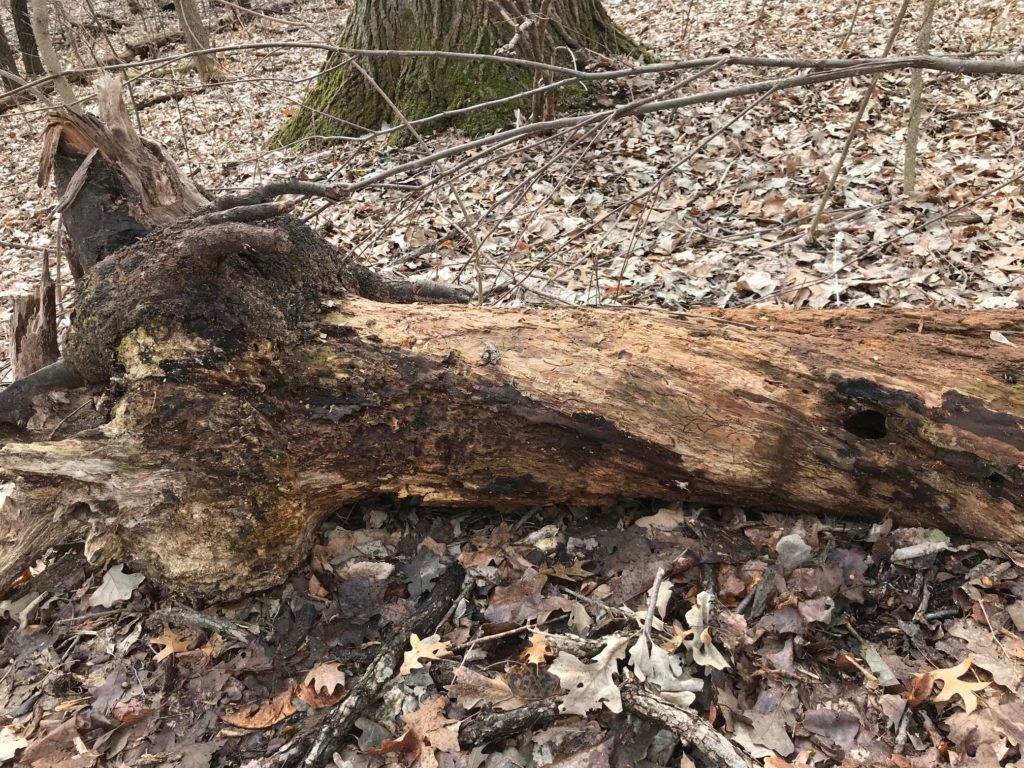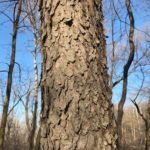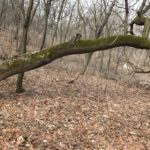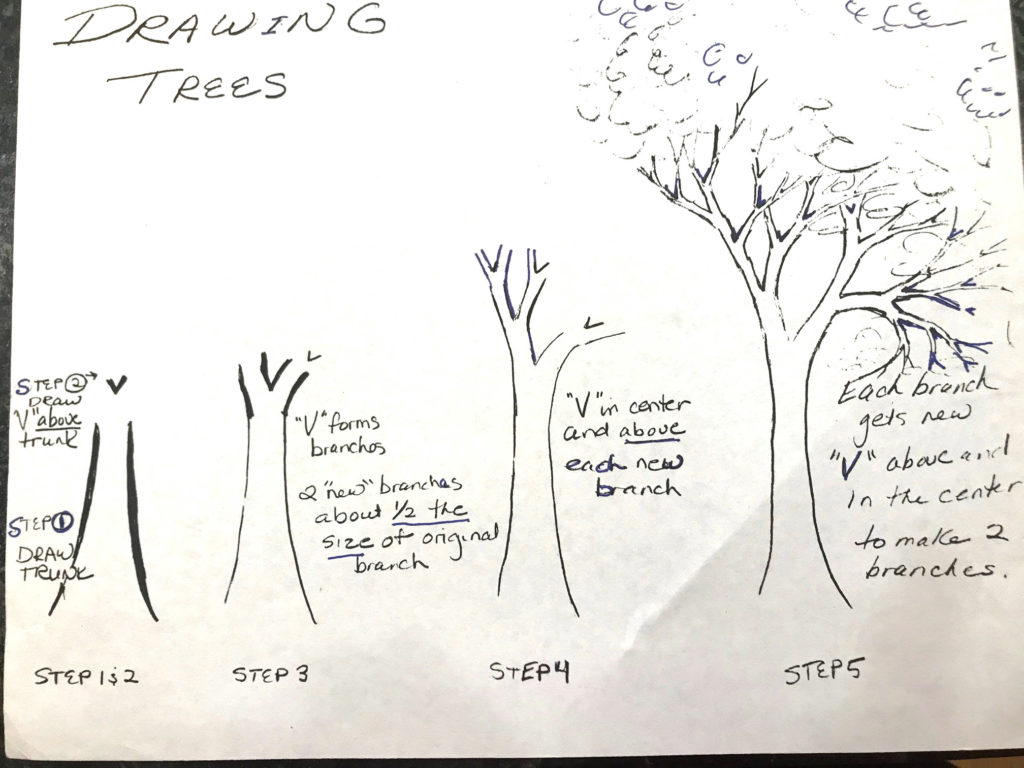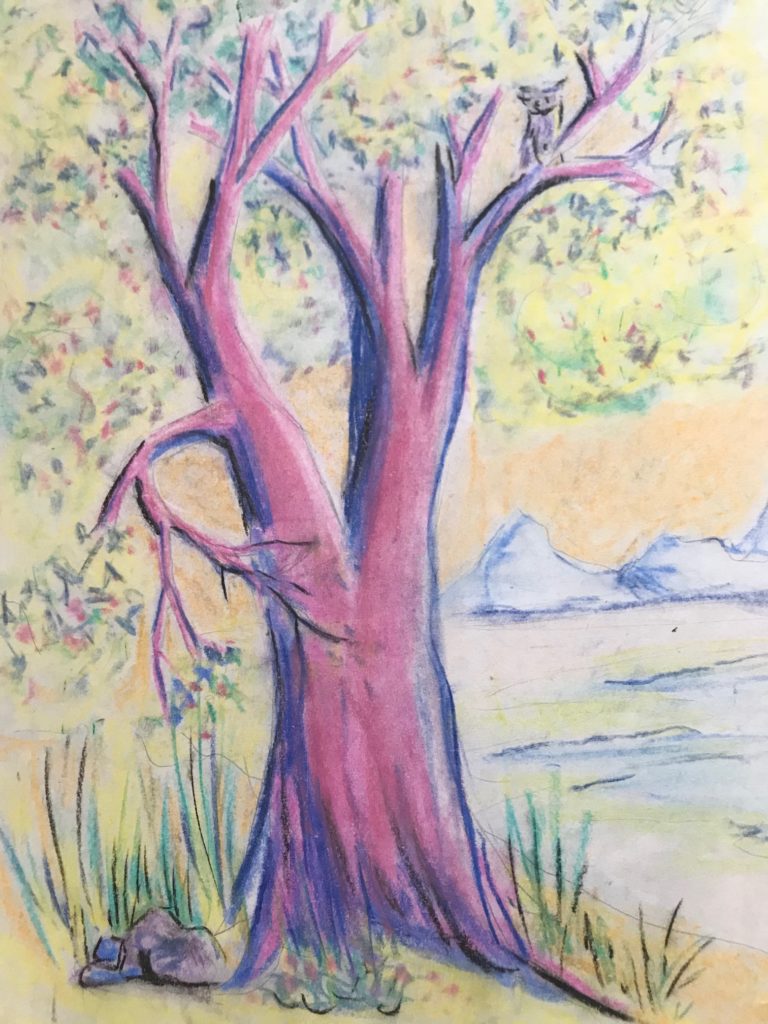Welcome to Nature School Week Two!
School is in…… or outside
Did you miss the first week of Nature School? Go to the pull-down menu at the top of the page and click on “Nature School”. Then click on “Winter Birds”. Also, isn’t it time to make your nature notebook?
This week we are focusing on trees. Do you have a forest or a park near you with a natural area? This week there are four tree-oriented projects. Also, guest artist Karen Anderson will teach you “how to draw a tree”. Be sure to share a nature note, a photo, or something you experienced at the bottom of the post (Leave a comment).
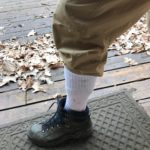 Safety Alert: With the warmer weather, ticks are active. Stay on walking paths/Do not walk on deer trails. You can wear shorts or wear pants with the socks pulled over the pant leg so can see ticks walking up your leg. Do frequent tick checks. At home, check your body.
Safety Alert: With the warmer weather, ticks are active. Stay on walking paths/Do not walk on deer trails. You can wear shorts or wear pants with the socks pulled over the pant leg so can see ticks walking up your leg. Do frequent tick checks. At home, check your body.
1. Animal Homes
1. Click here to learn about animal homes from my website.
2. Early Spring is a great time to study animal homes because the leaves are not on the trees. Go to a park with a natural area and look for animal homes. Try identifying some Animal homes. Use the identification page below. To download and print this page, click here.
3. Teacher/naturalist, Mark Storck suggested writing a story about a day in the life of the animal that lives in the hole.
2. Exploring a Rotten Log
Rotting logs are important to life in the forest. They provide temporary homes for creatures. Plants grow on them, and as they decompose they create soil for trees nearby.
What to Do: During your exploration find a rotten log that is decomposing.
a. How does it feel and smell? Is there fungus or moss growing on the log?
b. Look around. Is there evidence that animals use the log shelter or food? If there are poisonous snakes in you area (not in central Minnesota) be careful.
c. Is the log decomposing so that you can crumble part of the log in your hands.
d. Make a sketch of the log.
e. Record seven things in your nature notebook that you discovered while exploring the log.
f. Describe in detail how you felt inside your body after exploring the rotten log?
Mark Storck had the following suggestion: “In the rotten log study, caution students not to destroy the log. A great story it reminds me of is The Grandpa Tree. https://www.amazon.com/Grandpa-Tree-Mike-Donahue/dp/0911797424 for the book, and here’s a read aloud of it. https://www.youtube.com/watch?v=8NS8YKkIXpg”
3. Naming Special Trees
a.During your forest exploration, look at the shape of different trees, the bark and think about what you like about the tree.
b. Spend some time looking at the tree at all angles.
c. Teacher, Jeff Saslow says he has to touch the tree or even hug it
d. Give the tree a name. Do as many as you can. Write its name in your nature notebook.
e. Then make a sketch of one of the trees.
f.Describe in detail how you felt inside your body after doing this exercise?
g.Lastly, thank the tree for providing so much for all living things.
4. Legend of the Cottonwood Tree
Many people call a cottonwood a “messy tree” because the branches break off so easily. But to the Native people the cottonwood was very special.
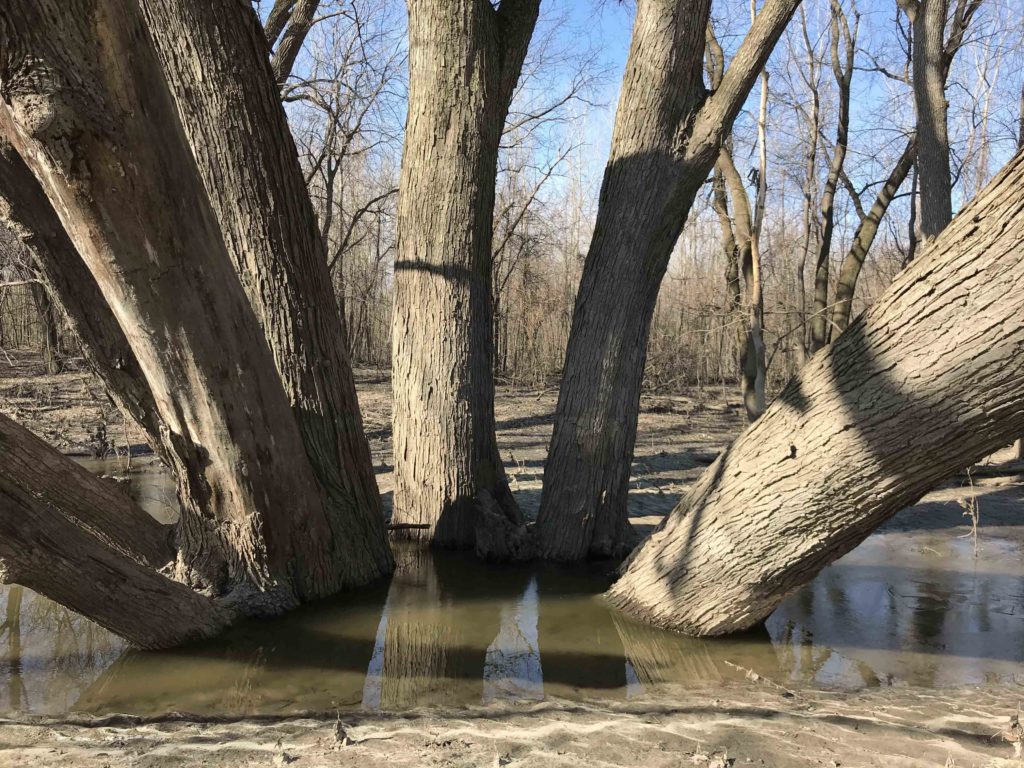
Cottonwoods like to grow close to water. A mature cottonwood will take in 200 gallons of water a day.
1. Below is the legend of the Cottonwood Tree. To download and print the page below, click here. Then read the legend.
2. Go find a cottonwood tree .
3. follow the directions below and try to find a star.
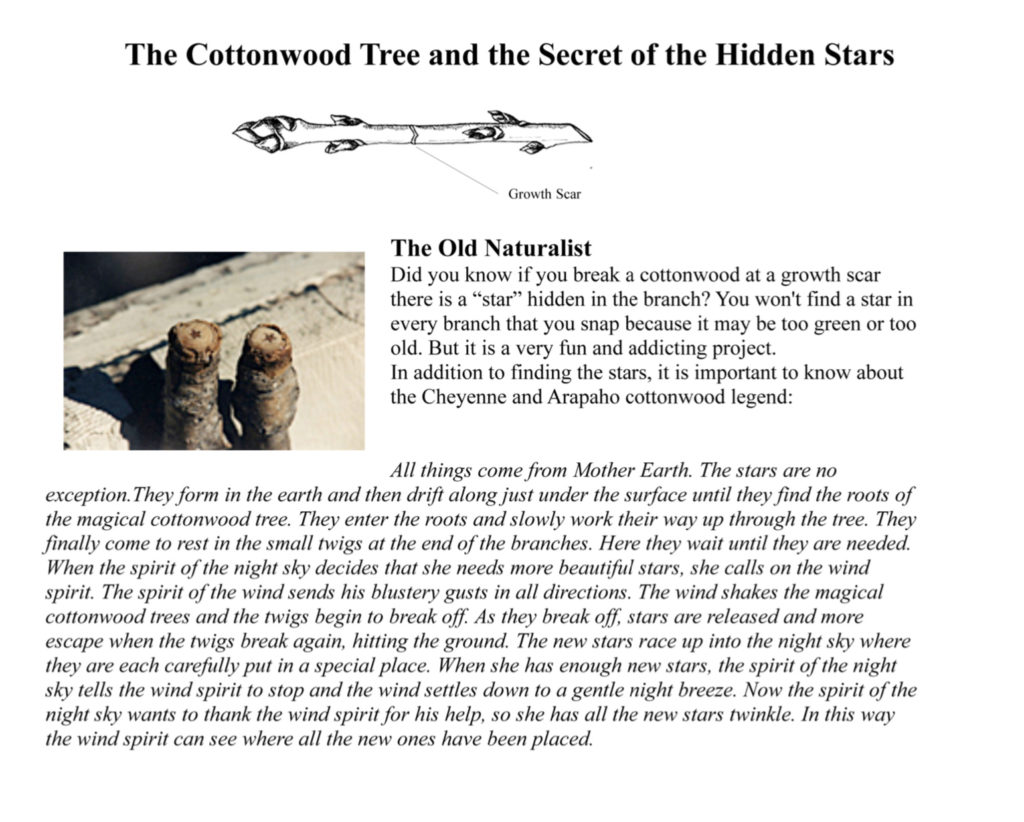
How to Draw a Tree (contributed by Karen Anderson, retired Hopkins art teacher)
You might want to practice drawing a tree inside by following Karen’s guidelines. Then head out and find a special tree to draw in your nature notebook. To download and print the Karen’s guidelines, click here.
Nature Seekers Share
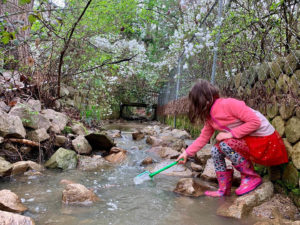 Quarantine day 8: We started a new theme this week, “Life in our backyard”. My Dad, Larry Wade is a naturalist and is a talented teacher. This is my life-long dream to give my children the love for nature that my parents gave to me. Today we explored the creek and found a baby crawfish and a raccoon jawbone. Before Luci’s lungs touched the fresh air and her hands touched the earth she was grumpy, irritable, and sluggish. The minute Luci entered the outdoors she was balanced, joyful, and exuberant. Human beings belong outside. This little person shows us evidence of that everyday.
Quarantine day 8: We started a new theme this week, “Life in our backyard”. My Dad, Larry Wade is a naturalist and is a talented teacher. This is my life-long dream to give my children the love for nature that my parents gave to me. Today we explored the creek and found a baby crawfish and a raccoon jawbone. Before Luci’s lungs touched the fresh air and her hands touched the earth she was grumpy, irritable, and sluggish. The minute Luci entered the outdoors she was balanced, joyful, and exuberant. Human beings belong outside. This little person shows us evidence of that everyday.
Luci and Alli Platter
Tammy and Ashlyn Paulus – On our hike today we saw a mallard duck and pileated woodpecker. It was bright red on the top of its head.
Emily Westlund family – We did the winter birds lesson today at Westwood Nature Center. It was a very successful outing! We saw a pair of cardinals, a pair of hawks which swooped down pretty low, a beautiful blue jay, Canada geese, mallard ducks, a pileated woodpecker, and many more we weren’t able to identify.

